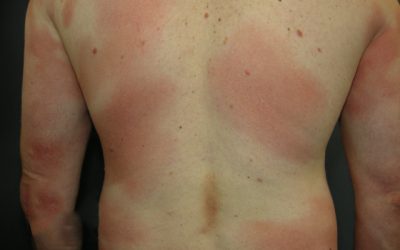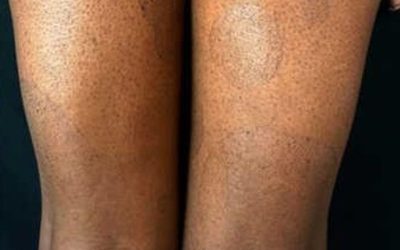Erythema multiforme
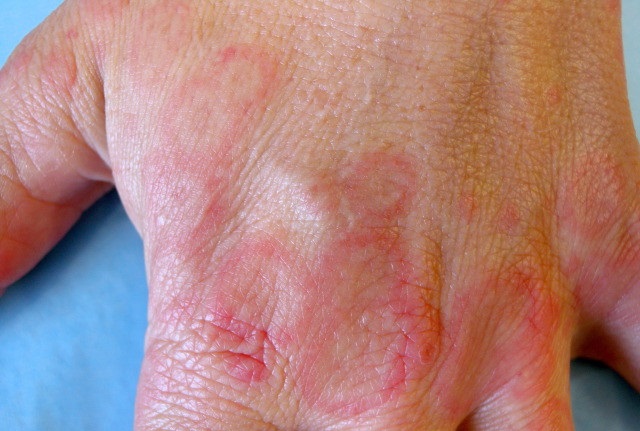
- may be considered a type IV hypersensitivity (allergic) reaction
- possibly caused by an infection (often Herpes simplex virus), certain medications (antibiotics, antiepileptics, non-steroidal anti-inflammatory drugs), vaccines, or the harmful effects of other factors
- in the case of persistent, intractable erythema multiforme, it may be due to cancer, inflammatory bowel disease, hepatitis C
- common in young adults, slightly more so in men
- is divided into large and small forms
- in the most cases, the mucous membranes are more involved
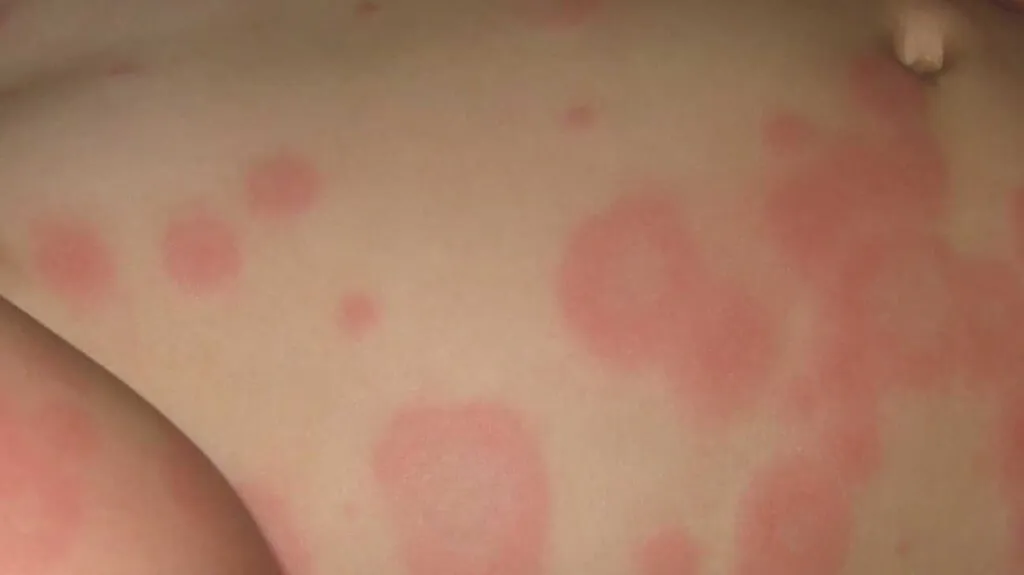
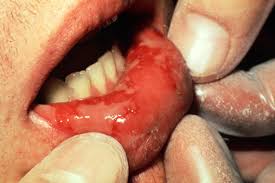
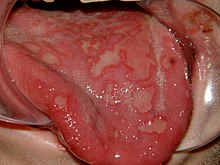
Skin manifestation is characterized by a specific rash:
- symmetrical distribution of the rash
- initially characterized by small red papules (palpable bumps on the skin) that later develop into a target-shaped rash
- the target-shaped rash consists of three zones: a central, brighter area of necrosis, surrounding it with lighter, swollen areas, and finally, a peripheral red zone
- sometimes the rash can be atypical, in which case you don’t see clear changes in color depending on the area
- the rash may be painful, itchy, and swollen
- localization: mostly the extensor surfaces of the limbs
Manifestation in mucous membranes:
- appears in the form of blisters that rupture leaving sores
- damaged areas are painful, therefore, in case of damage in the mouth, it can interfere with eating
- localization: usually in the mouth, less often in the mucous membranes of the urinary and genital organs
Diagnostics
The patient’s survey and examination data are usually sufficient to establish the diagnosis. However, in case of doubt or in order to find out the possible cause of the disease, the adjacent condition that promotes the disease, the following tests can be performed:
- general blood test
- ENG
- liver function tests
- infection marker tests
- chest x-ray
Treatment
In milder cases, treatment might not be necessary, but for persistent symptoms or more severe cases, the doctor can create a personalized treatment plan to improve the overall condition. Different approaches are used based on the symptoms:
- For itching, a combination of oral and topical treatments can be considered.
- In cases where mucous membranes are affected and painful, antiseptics and local pain relief solutions might be used.
- If an infection contributing to the condition is identified, its treatment becomes a priority.
- Avoiding identified triggers that may exacerbate the condition is recommended.
- In severe cases, especially when mucous membranes are significantly affected, a more comprehensive treatment approach may be required.
- For recurrent issues, preventive strategies targeting potential viral causes can be considered, as well as other treatments that modulate the immune system.

Peeling skin syndrome
Peeling skin syndrome is a genetic disorder characterized by constant peeling of the skin. The disease appears from birth or in the first year of life
lasts a lifetime
Mycosis Fungoides
The most common primary skin T-cell lymphoma (cancer of the blood). Mycosis Fungoides is characterized by three main stages, several of which may exist at the same time
Paraneoplastic dermatological manifestation of gastrointestinal malignancies
rare disorders resulting from the immune system’s response to a cancerous process (neoplasia) in the body. Gastrointestinal neoplasms more often cause paraneoplastic syndromes affecting the skin.


